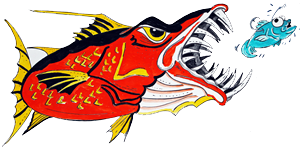Flounder Fishing in Murrells Inlet can be a thrilling and rewarding experience for both novice and experienced anglers alike. Flounder fishing requires specific techniques and strategies to be successful, and in this comprehensive guide, we will cover everything you need to know to catch more flounder in Murrells Inlet, SC.
Whether you’re fishing from the shore or from a boat, we’ve got you covered. From choosing the right bait and tackle to understanding the best times and locations to fish, our tips and tricks will give you the edge that you need to land more.
So, grab your gear and get ready to become a flounder fishing pro!
Understanding Flounder
Before you start fishing for flounder, it’s essential to understand their behavior and habitat. Flounder are a type of flatfish that are found in a saltwater environments. They are bottom-dwelling fish that are known for their ability to camouflage themselves on the ocean floor.
Flounder can be found in Murrells Inlet year-round, but their behavior and movement patterns vary depending on the season. In the winter months, they tend to migrate to deeper waters, while in the summer months, they can be found in shallower waters closer to the shore.
Choosing the Right Bait and Tackle
One of the most crucial aspects of flounder fishing is choosing the right bait and tackle. Here are some tips for selecting the best gear:
Bait: They are opportunistic feeders and will eat almost anything that crosses their path. Some popular baits include live minnows, shrimp, squid, and artificial lures.
Tackle: When it comes to tackle, a light to medium spinning or baitcasting rod and reel combo is suitable for flounder fishing. A fluorocarbon leader is also recommended, as it is less visible in the water than traditional monofilament.
Best Times and Locations to Fish for Flounder
Knowing when and where to fish for flounder is essential to increasing your chances of success. Here are some tips for finding the best spots:
Time of Day: Flounder are most active during low-light conditions, such as dawn, dusk, and nighttime.
Location: Flounder can be found in a variety of locations, including channels, drop-offs, and around structures such as docks and bridges.
Techniques for Catching Flounder
Once you’ve selected the right gear and found the best spot, it’s time to start fishing. Here are some techniques for catching more flounder:
Drift Fishing: Drift fishing involves casting your bait or lure and letting it drift along with the current. This technique is effective when fishing in channels or drop-offs.
Jigging: Jigging involves bouncing your lure off the bottom to mimic a baitfish. This technique can be effective in deeper waters or around structures.
Still Fishing: Still fishing involves casting your bait or lure and letting it sit on the bottom. This technique is effective when fishing in shallower waters or around structures.
Tips for Catching
Here are some additional tips to help you catch more:
- Use a slow, steady retrieve when fishing with artificial lures.
- Pay attention to your line and be ready to set the hook at the first sign of a bite.
- Try using a scent attractant to entice more bites.
- Avoid using to heavy of tackle so you do not miss the bite.
Cleaning and Cooking
Once you’ve caught your flounder, it’s time to clean and prepare it for cooking. Here are some steps to follow:
- Gut the fish: Cut along the belly and remove the guts and organs.
- Remove the head and tail: Cut off the head and tail of the fish.
- Scale the fish: Use a scaling tool or knife to remove the scales from the skin.
- Fillet the fish: Use a sharp knife to cut along the spine and remove the fillets.
When it comes to cooking , there are countless delicious recipes to choose from. Some popular methods include frying, baking, grilling, and broiling. No matter how you choose to cook your flounder, it’s essential to keep an eye on it and avoid overcooking, as this can cause the fish to become dry and tough.
Frequently Asked Questions (FAQs)
What is the best time of day to fish for flounder in Murrells Inlet?
Flounder are most active during low-light conditions, such as dawn, dusk, and nighttime.
What type of bait is best for catching flounder?
Flounder are opportunistic feeders and will eat almost anything that crosses their path. Some popular baits for flounder include live minnows, shrimp, squid, and artificial lures.
What is the best technique for catching flounder?
Drift fishing, jigging, and still fishing are all effective techniques for catching.
What should I look for when choosing a flounder fishing spot?
Look for areas with channels, drop-offs, or structures such as docks and bridges. Also, consider the time of day and season, as r behavior and movement patterns can vary.
How do I clean and prepare flounder for cooking?
To clean and, gut the fish, remove the head and tail, scale the skin, and fillet the fish. When cooking, avoid overcooking to prevent the fish from becoming dry and tough.
Unlocking the Secrets of Flounder Fishing in Murrells Inlet
Fishing for flounder in Murrells Inlet, South Carolina can be a fun and rewarding experience, but it requires specific techniques and strategies to be successful. By understanding the behavior and habitat of flounder, choosing the right gear and bait, and knowing the best times and locations to fish, you can increase your chances of landing more flounder.
Remember to use techniques such as drift fishing, jigging, and still fishing, and be prepared to adjust your approach based on the conditions. And don’t forget to clean and prepare your flounder carefully to ensure that it’s delicious and enjoyable to eat.
With the tips and information provided in this comprehensive guide, you’ll be well on your way to becoming a flounder fishing pro in Murrells Inlet!
